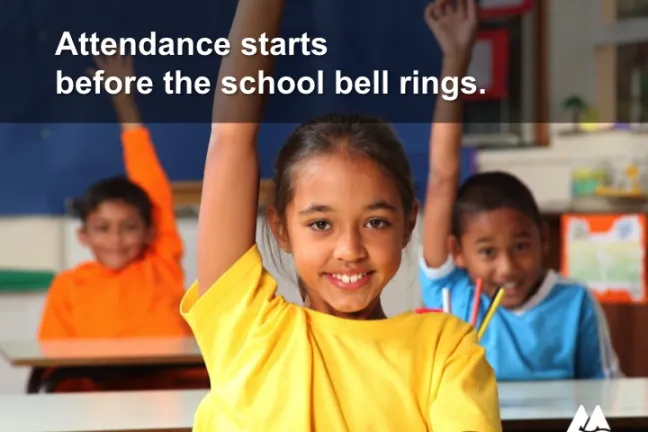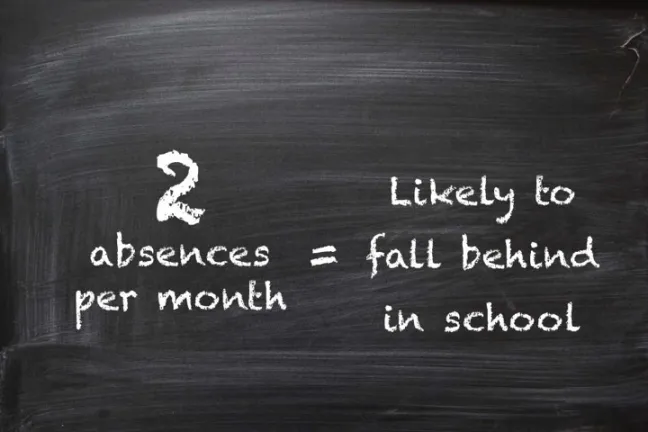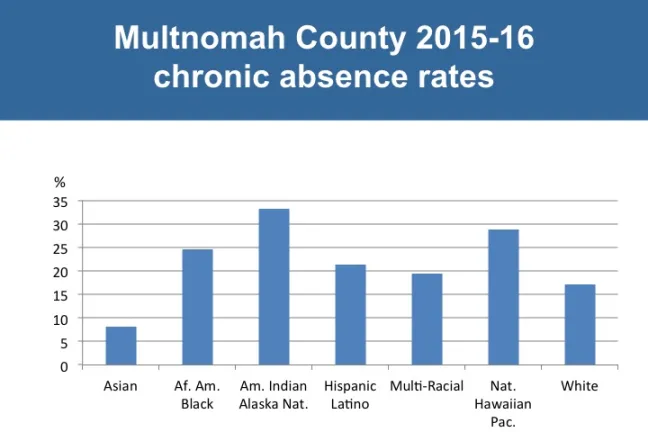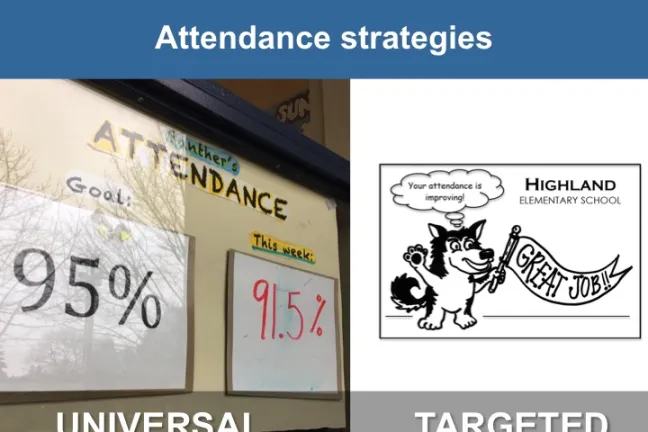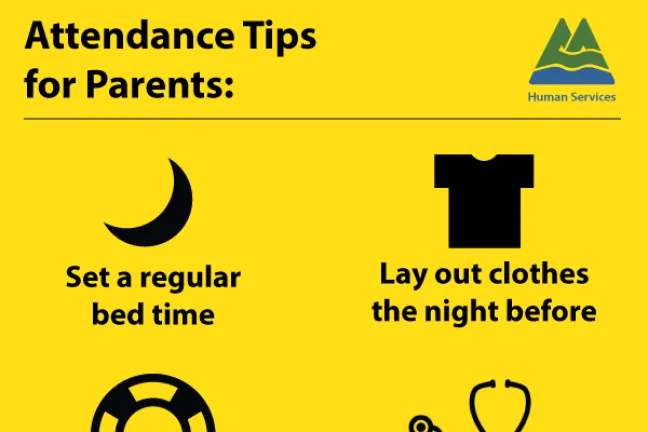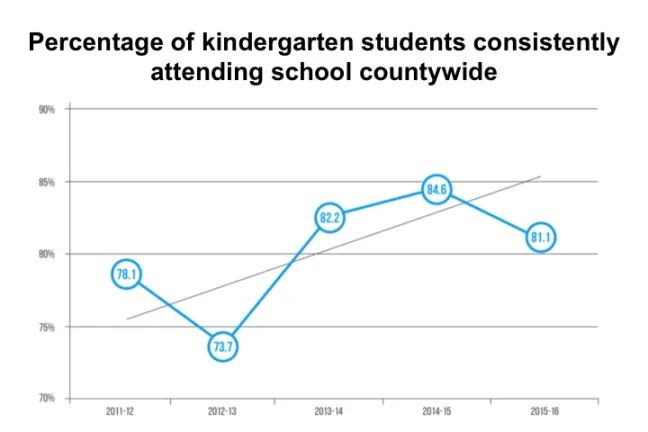On this page
- 1. Attendance starts before the school bell rings
- 2. Illness and health issues, mental health issues, homelessness, and transportation challenges cause children to not get up in the morning
- 3. Absences matter A LOT
- 4. Chronic absence is taking a huge toll on communities of color
- 5. The public and community-based organizations have teamed up with schools to get kids to school
- 6. There are things parents can do in the home to prevent chronic absence
- 7. We are seeing progress
- 8. But there's more work to do. Let's make sure everyone knows how critical chronic absences are!
On March 16, leaders from Multnomah County Dept. of County Human Services and guests presented to the County Board of Commissioners our efforts to help get kids to school ready to learn. Below are some selections from the presentation and additional resources. Here's what you need to know:
1. Attendance starts before the school bell rings
It is our all of our jobs to ensure that the future is in good hands. That means making sure young people have access to a full range of opportunities throughout their childhood, so that they can take their place in stewarding our community when their turn comes.
The community is coming together to address one of the key indicators of student success - school attendance.
The County and partners play a critical role in making sure kids get to school ready to learn because as you’ll see attendance starts before the school bell ever rings.
2. Illness and health issues, mental health issues, homelessness, and transportation challenges cause children to not get up in the morning
In Multnomah County, we hear from families that illness and health issues, mental health issues, homelessness, and transportation challenges cause children to not get up in the morning. These some of are the most common factors that cause children to miss school. If we can remove some of that baggage, students will be more able to focus in the classroom.
3. Absences matter A LOT
Most people would agree that attending school is important, but not many people are aware of how absences can add up. Chronic absence is missing 10% or more of the school year for any reason. This equates to 18 days a year or 2 absences a month.
It doesn’t matter if the absences are excused or unexcused - or whether they are all in a row or once in awhile - the effect is the same.
Chronic absence has a particularly great and lasting effect, impacting children’s ability to read by third grade and causing them to be enough behind their peers that they are challenged to catch up even if their attendance improves in later grades. (Attendance Works).
4. Chronic absence is taking a huge toll on communities of color
Nearly 1 out of 5 kids are chronically absent in Multnomah County’s largest 6 school districts - that’s 17,000 who miss 10% or more of school each year.
And chronic absenteeism disproportionately impacts students of color – and in particular communities chronic absence rates are over 25% per year. In a 180 day school year that’s missing 45 days of school, for example.
Chronic absence is especially problematic among students living in poverty who are most likely to have poor attendance over multiple years and least likely to have the resources to make up for the lost time in the classroom. Among poor children, chronic absence in kindergarten predicts the lowest levels of educational achievement at the end of fifth grade. Research shows that children, regardless of gender, socioeconomic status or ethnicity, lose out when they are chronically absent.
5. The public and community-based organizations have teamed up with schools to get kids to school
Our community working together is creating change.
Multnomah County, Centennial School District, David Douglas School District, Parkrose School District, Portland Public Schools, Reynolds School District, All Hands Raised, the Department of Human Services, Home Forward, Campus Compact, Multnomah County Library and nonprofits such as SEI, Latino Network, IRCO, Impact Northwest, Metropolitan Family Service, Multnomah County School Based Health Clinics, Portland Parks and Recreation, Neighborhood House, NAYA, El Programa Hispano, Boys and Girls Clubs and more have come together to address chronic absenteeism.
The County, in particular, has contributed funding, toolkits for community partners, awareness building and evaluation.
Lastly, schools are working on universal and targeted approaches. The universal strategies include creating a culture of attendance at the schools. Whereas the targeted strategies include teams that work together with students and families who are chronically absent.
6. There are things parents can do in the home to prevent chronic absence
We have an online resource for parents with tips for getting kids to school.
In general, here are some steps every parent can take to ensure success:
- Set a regular bedtime and morning routine
- Lay out clothes and pack backpacks the night before
- Share ideas with other parents for leaving for school on time
- Develop back-up plans for getting to school if something comes up
- Get health care from a School-Based Health Center to minimize time out of class.
- Ask family members, neighbors or other parents to help if you need assistance dropping off or picking a child up
- If possible, schedule medical appointments for days school isn’t in session
- If your child is anxious about starting or attending school, talk with the principal, director, teacher, doctor or other parents for advice.
7. We are seeing progress
Chronic absence in kindergarten is a primary predictor of educational achievement in 5th grade (itself a predictor of future academic success). Through our concentrated work together we are changing the overall trajectory for our youngest elementary students.
8. But there's more work to do. Let's make sure everyone knows how critical chronic absences are!
You might know some parents of school-aged children. You might go to places where there are a lot of parents, like places of worship or work. If so, you can make sure people know about the importance of attendance by putting up
Visit /sun/attendance for more.
